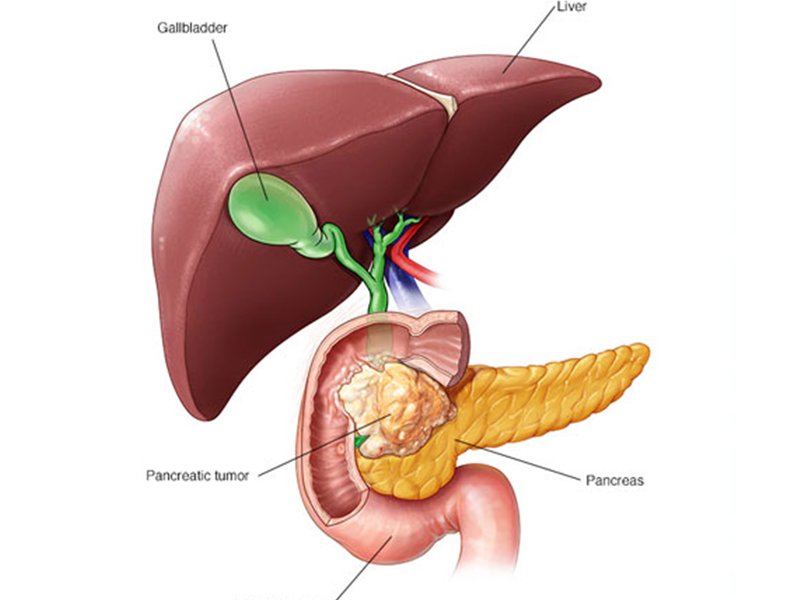Treatment
Pancreatic Cancer

Pancreatic cancer is aggressive with few symptoms until the cancer is advanced. Symptoms may include abdominal pain, weight loss, diarrhea, and jaundice. Treatments include surgery, chemotherapy, and radiation.
Types of Pancreatic Cancer
Pancreatic cancer is classified according to which part of the pancreas is affected: the part that makes digestive substances (exocrine) or the part that makes insulin and other hormones (endocrine). Although there are several different types of exocrine pancreatic cancer, 95% of cases are due to pancreatic adenocarcinoma.
Other less common exocrine pancreatic cancers include:
- Adenosquamous carcinoma
- Squamous cell carcinoma
- Giant cell carcinoma
- Acinar cell carcinoma
- Small cell carcinoma
Symptoms
Pancreatic Cancer Symptoms: Location Matters
Initially, pancreatic cancer tends to be silent and painless as it grows. By the time
it's large enough to cause symptoms, pancreatic cancer has generally grown outside the
pancreas. Because of the location of the pancreas in the body, symptoms include:
- Jaundice. As pancreatic cancer blocks duct that releases bile into the intestine (common bile duct), the ingredients of bile build up in the blood. This turns the skin and the eyes yellow, a condition called jaundice. The same blockage causes dark urine, light colored stools, and itching.
- Abdominal pain. Pancreatic cancer can cause a dull ache in the upper abdomen radiating to the back. The pain may come and go.
- Back pain.
- Bloating. Some people with pancreatic cancer have a sense of early fullness with meals (satiety) or an uncomfortable swelling in the abdomen.
- Nausea.
- Yellowing of the skin and whites of the eyes (jaundice)
